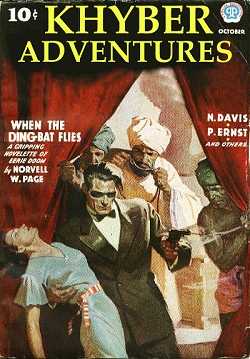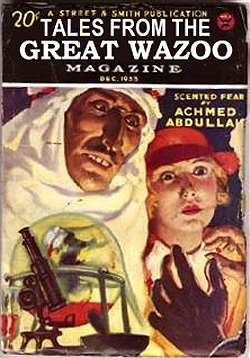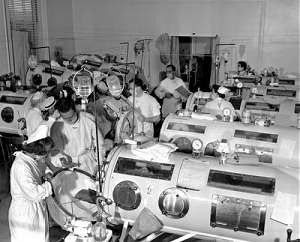The surge in violence against Shia Muslims in 2012 may be a result of the increasing influence of Punjab's sectarian militants
On August 16, 22 Shia passengers travelling from Rawalpindi to Gilgit Baltisitan were pulled out of a bus and killed by around 50 assailants wearing army uniforms in the Babusar area of Mansehra. The victims included four Sunnis who protested and asked the terrorists not to kill innocent Shias. On February 28, unidentified gunmen killed 18 Shia Muslim passengers of a bus in a sectarian attack in Kohistan on the same route.
On July 19, 13 passengers belonging to Baba Nawasi Khel, a Shia sub-clan of the Sipah tribe of Orakzai Agency, were killed when a remote-controlled bomb planted on the road exploded near the pick-up van that was en route to Kohat from Lower Orakzai.
The Darra Adamkhel chapter of Tehrik-e-Taliban Pakistan (TTP) has claimed responsibility of the attacks. "The people killed (in the attacks) were Shias who are involved in killing Sunnis against the will of Islam," their spokesman Muhammad Afridi told local reporters. "We will target them again in the future."
Sectarian violence has resurged in Pakistan in 2012, after TTP-backed militant outfits intensified their campaign against Shias, security analysts say.
There was a significant decrease in sectarian attacks in 2011, according to a report by the Pakistan Institute for Peace Studies (PIPS). But unlike in 2010, the violence was not confined to a few cities. The report said 314 people were killed and 450 injured in 111 sectarian-related terrorist attacks in Pakistan in 2011.
In the first four months of 2012, sectarian killings rose 91% compared with the same period in 2011, according to statistics compiled by the South Asia Terrorism Portal (SATP), a think tank which monitors terrorism and sectarianism in the South Asian countries. From January to April this year, about 164 people were killed in sectarian attacks, compared to 86 last year, the SATP said.
Six new groups have claimed responsibility for various sectarian attacks carried out in 2012, according to Muhammad Amir Rana, director of PIPS. He said it was not clear if that indicated the emergence of new violent sectarian groups, or merely the tactical use of new names by the old groups.
| "Rising sectarianism in Khyber Pakhtunkhwa and FATA is a direct result of the arrival of Punjabi Sunni militants in the area in the recent years" |
Security analysts say sectarian violence will continue to be a long-term challenge because there is a strong nexus between sectarian groups, the Taliban, and Al Qaeda.
Because of that nexus, the narrative of the sectarian groups has changed to include regional and international politics. There are two major reasons for that transformation, Rana wrote in his recent article.
First, after the sectarian groups joined the bigger alliance of Al Qaeda, their targets changed, at least for the time being. For example, splinter groups from Kashmir-focused militant organizations cut off ties with their parent organizations calling them puppets of state agencies and developed a relationship with Al Qaeda.
Second, sectarian groups detached themselves from the dominating religious discourse, whose main emphasis was on Islamisation and sectarian supremacy through political means and jihad against external forces (mainly other states) to safeguard Pakistan's ideological and geographical boundaries.
| Shia tribal elders of Orakzai and Kurram believe that they are being attacked because they did not offer shelter to Al Qaeda, Afghan Taliban and local militants fleeing Tora Bora in December 2001 |
Rana thinks that Al Qaeda transformed the operational capacity of sectarian groups and also broadened their sectarian views. "Groups linked with Al Qaeda and Taliban believe that the opponent sects, whether they are in minority or majority, are hurdles in the way of establishing Islam according to their concepts," he said.
Before 2001, sectarian violence affected mostly Punjab and Karachi, although violent incidents erupted in Kurram Agency in the mid-1980s, said Mariam Abou Zahab, a Paris-based security analyst who studies sectarianism in Pakistan.
The Taliban militants in Khyber Agency, Bajaur Agency, Mohmand Agency and Swat are influenced by the Salafi (Panjpiri) school of thought. The groups led by late Baitullah Mehsud, Hafiz Gul Bahadar and Maulvi Nazir Ahmed belong to Deobandi school of thought and influenced by Jamait Ulema Islam-Fazl (JUI-F), said a JUI-F leader in North Waziristan.
"JUI-F linked militant commanders didn't allow sectarianism in their ranks and files," he claimed, adding that sectarian groups were carrying out subversive activities in Dera Ismail Khan, Kohat and Peshawar independently.
Security experts say the arrival of Punjab-based militants and the heavy influx of foreign militants - mostly Arab and Central Asian - has also influenced the TTP. "Rising sectarianism in Khyber Pakhtunkhwa and FATA is a direct result of the growing Talibanisation and of the arrival of Punjabi Sunni militants in the area in the recent years," Abou Zahab said.
After the Laal Masjid episode, many frustrated militants, especially from Southern Punjab, abandoned local anti-Shia sectarian outfits and went to Waziristan to join the TTP and other groups linked to Al Qaeda, said Ahmed Wali Mujeeb, a journalist who monitors Taliban activities in the region.
After the killing of Baituallh Mehsud in a drone strike , Hakimullah Mehsud, Qari Hussain Ahmed and Azam Tariq (real name Raees Khan Mehsud), with clear affiliations to sectarian outfits, became central leaders of the TTP, Mujeeb said. Tariq Afridi, the TTP commander for Darra Adamkhel and Khyber Agency, was also associated with a sectarian outfit in the past.
The TTP killed a large number of Shias and Sunnis since after its inception in December 2007. Also, in December 2007, Baitullah Mehsud sent a group of 400 Mehsud militants under the command of Qari Hussain to burn down several Shia villages and kill dozens of Shias.
Shia tribal elders of Orakzai and Kurram believe that they are being attacked because they did not offer shelter to Al Qaeda, Afghan Taliban and local militants fleeing Tora Bora in December 2001. A gunfight between local Shia tribes and foreign militants in December 2001 left many Arabs dead.
Security analysts and governmental officials in Kabul also say that a large number of militants from Punjab-based sectarian outfits have joined hands with Afghan groups in recent years and inciting sectarianism in Afghanistan.
At least 55 Shia Muslims were killed on December 6, 2011 in a suicide bombing at a crowded Kabul shrine. Another suicide bomber killed four Shias in the city of Mazar-e-Sharif. A spokesman for a little known Pakistani militant outfits Lashkar-e-Jhangvi al Almi claimed responsibility in a phone call to Radio Mashaal.
After the fall of the Taliban regime, there have not been any large scale attacks on Shia gatherings, said Afzal Barakzai, a Kandahar-based analyst. "These attacks occurred after Afghan Taliban emir Mullah Omar's Eid statement asking provincial leaders to investigate claims of civilian casualties in Taliban attacks," he said.
Analysts believe it would have been impossible for the Punjab-based militants to have acted alone in Afghanistan. They have run training camps in the country and are involved in the killing of hundreds of Shias in Mazar-e-Sharif and Bamiyan, and may have found the support of splinter groups of Afghan Taliban. |
.png) Wazoo and other tribal areas, killing at least 600 holy warriors according to the military.
Wazoo and other tribal areas, killing at least 600 holy warriors according to the military.
 [DAWN] The North
[DAWN] The North 

 GUNS have fallen silent in Mirali -- a bustling town 35km to the east of North Waziristan's regional headquarters of Miramshah, but now with rows of burnt down and bombed shops and houses. A ceasefire has now been in effect. But the question is for how long. The military is edgy. For far too long, they say, they sat out there, taking casualties.
GUNS have fallen silent in Mirali -- a bustling town 35km to the east of North Waziristan's regional headquarters of Miramshah, but now with rows of burnt down and bombed shops and houses. A ceasefire has now been in effect. But the question is for how long. The military is edgy. For far too long, they say, they sat out there, taking casualties. Nawaz Sharif
Nawaz Sharif
 An Urdu-language pamphlet distributed by
An Urdu-language pamphlet distributed by